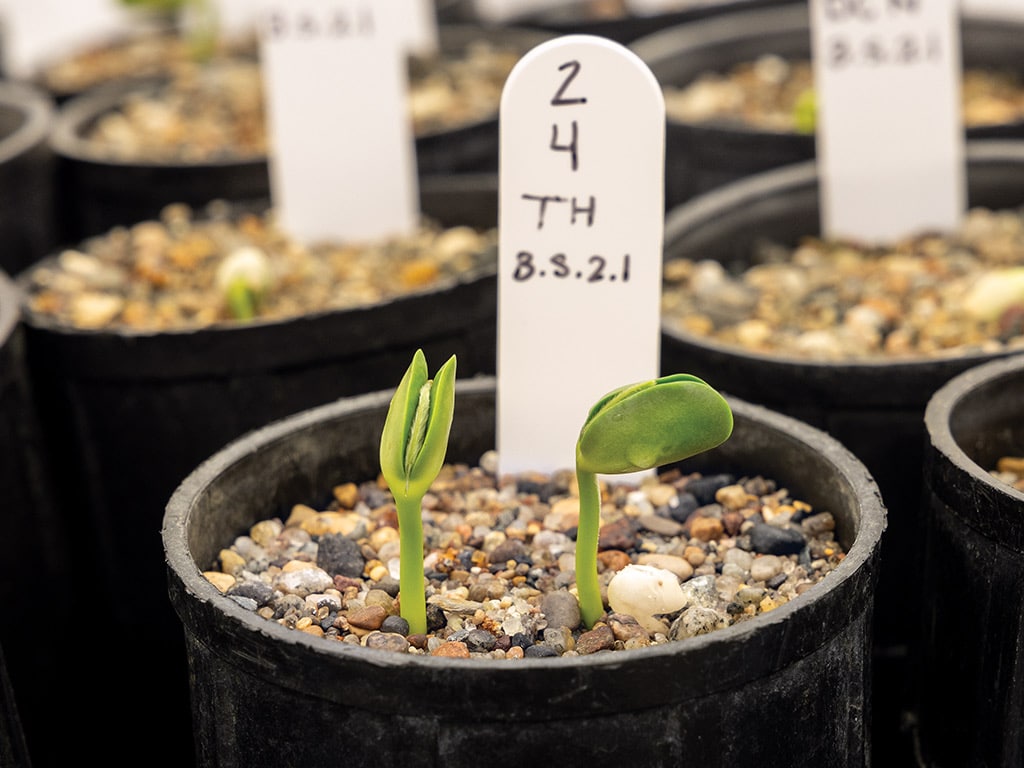Agriculture, Farm Operation December 01, 2023
Cash Calculator
.
The SCN Profit Checker estimates per-acre dollar damage inflicted by soybean cyst nematode.
Coffee shop bragging and bemoaning about growing soybeans often revolves around bushels. A bevy of bushels translates into a bin-busting harvest. Conversely, pest pressure that blitzes soybeans results in fewer bushels gleaned at harvest.
Still, it's dollars that pay bills, not bushels.
That's the belief behind the SCN Profit Checker (www.thescncoalition.com/profitchecker) that Iowa State University (ISU) scientists have developed. The tool asks users to enter several SCN and soil variables, estimated yield, and market price to calculate a yield-loss percentage that converts to a dollars-per-acre loss estimate.
"This calculator produces just an estimate," says Greg Tylka, ISU Extension nematologist, "but it can motivate a farmer to work with an agronomist to devise an SCN management plan."
Above. The SCN Profit Checker helps soybean farmers estimate yield losses in monetary terms and consider alternative management measures, says Greg Tylka, Iowa State University Extension nematologist.
Resistance to resistance. Farmers have battled SCN through SCN-resistant varieties for years.
There's a hitch, though. Ninety-five percent of SCN-resistant varieties share the same genetic resistance source: PI 88788. Over time, SCN can resist this source, reproduce, and eventually render the resistance useless.
ISU scientists have been evaluating soybean varieties for yields and SCN resistance since the early 1990s. The research received a boost in 2010 with soybean checkoff funding from the Iowa Soybean Association.
"What makes our information valuable is we evaluate SCN-resistant soybean varieties not only for yield, but also for how well the nematode reproduces," says Tylka. He explains ISU has compiled data from 35,000 field research plots over the last 20 years.
The SCN Profit Checker uses this data to help farmers anticipate future SCN yield losses. High estimated yield loss could prompt a farmer to rotate to a non-host crop or plant an alternative source of SCN resistance.
In a 2019 ISU trial, a Peking SCN-resistant variety planted on a high SCN-reproducing field outyielded a PI 88788-resistant variety by 22 bushels per acre. At a $12 per bushel price, this spurs a $264 per acre difference.
The calculator asks users to enter yield goal, expected price, and four variables that impact SCN numbers: SCN egg count, female index on PI 88788, soil sand content, and soil pH.
Egg counts are derived from pulling soil samples.
"We advise collecting 10 to 20 soil cores 6 to 8 inches deep from 20-acre areas of a field in a zig-zag pattern," Tylka says. "An agronomist can help farmers through the process of getting a good egg count."
Some soil testing labs can assess the SCN female index on PI 88788 varieties. This number indicates how well SCN will reproduce on varieties with PI 88788 resistance.
"Numbers from 0% to 10% indicate the PI 88788 resistance will work well," says Tylka. "In fields with a 91% female index on PI 88788, the variety might well be susceptible."
Sandy soils tend to spur more SCN reproduction, which results in more root stunting and greater SCN damage, Tylka says.
SCN numbers also increase in high pH soils. Extensive soil samples for SCN and pH pulled by Tylka and Antonio Mallarino, ISU Extension soil fertility specialist, found SCN numbers increased when soil pH increased from 5.5 to 8.0.
Once a farmer enters these numbers, the calculator produces a yield-loss estimate that converts to dollars per acre.
"We put yield losses in a percentage so it can apply to any field," says Tylka.
The calculator has potential for use in other states, he says. "We want to apply it broadly, with farmers inserting their own information," he says.
Since they have been around for three decades, SCN-resistant varieties that deter SCN have become standard management.
"But as nematodes overcome this resistance, farmers and agronomists must be engaged to manage it," says Tylka. "The calculator is a way to become actively engaged to manage SCN." ‡
Read More

AGRICULTURE, LIVESTOCK/POULTRY
Mountain Flow
Bending production to flow with ecological and market needs.



